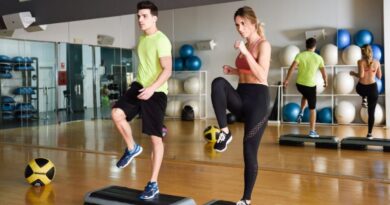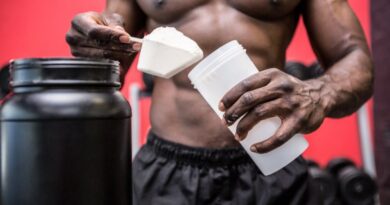Embarking on the journey to well-defined biceps requires more than just lifting weights—it demands a strategic selection of exercises tailored to maximize growth and strength. In this comprehensive guide, we unveil the 7 best bicep exercises for men that stand out among the myriad of workout options. From classic curls to innovative variations, our curated list ensures a balanced and effective approach to bicep training.
Whether you’re a fitness enthusiast or a beginner aiming to sculpt those coveted peaks, these exercises cater to all levels. Elevate your workout routine and witness the transformation as we delve into the science behind each move and guide you towards achieving the biceps you’ve always desired.
Best Bicep Exercises for Men
Barbell Curl
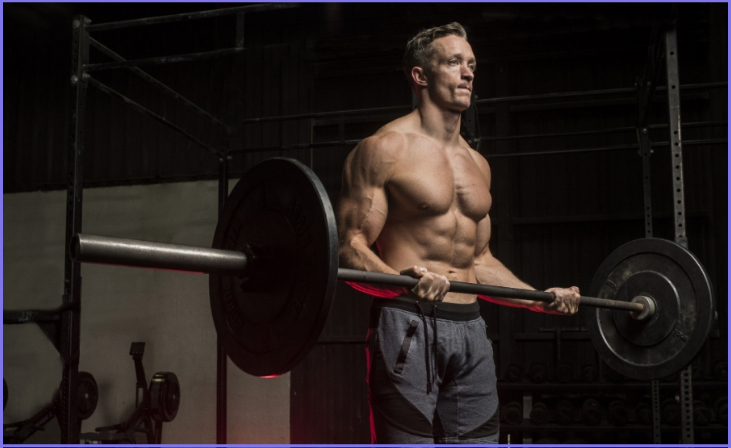
The barbell curl is a foundational bicep exercise renowned for its effectiveness in targeting the biceps brachii. This compound movement places emphasis on both the long and short heads of the muscle, contributing to comprehensive bicep development. To execute a barbell curl, assume a shoulder-width stance, grip the barbell with palms facing forward, and smoothly lift the bar toward your chest while keeping your elbows close to your body. This exercise is conducive to lifting heavy weights, fostering strength gains and promoting overall bicep hypertrophy.
Dumbbell Hammer Curl
The dumbbell hammer curl stands out as a versatile bicep exercise engaging not only the biceps but also the brachialis and brachioradialis muscles. Stand with a dumbbell in each hand, palms facing your body, and lift the weights while keeping your elbows close to your torso. The hammer grip, with palms facing inward, targets the muscles differently than traditional curls, providing a well-rounded approach to bicep training and contributing to forearm development.
Also Read: Exercises For Knee Pain Relief
Preacher Curl
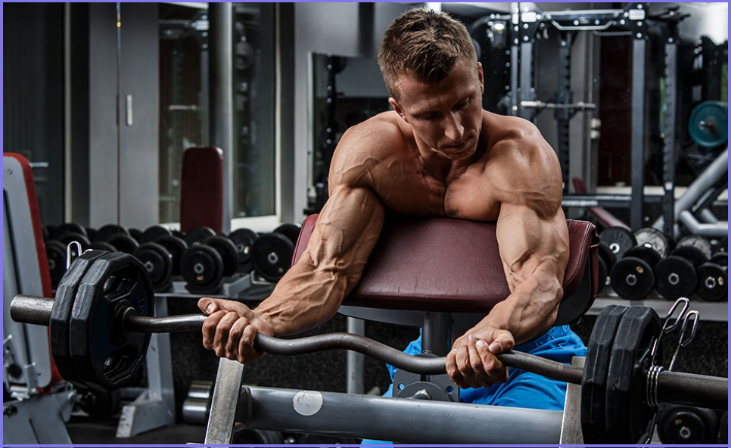
For targeted isolation of the biceps, the preacher curl is a go-to exercise that eliminates momentum. Using a preacher bench, position your arms on the pad and curl the barbell or dumbbells towards your face. This movement places significant emphasis on the peak contraction of the biceps, facilitating muscle growth and definition. The preacher curl is particularly advantageous for those aiming to focus on specific areas of the biceps for aesthetic purposes.
Concentration Curl
Concentration curls excel at isolating the biceps and sculpting a prominent peak. Seated on a bench with legs spread apart, take a dumbbell in one hand and place your elbow against the inner thigh. Execute a controlled curl, bringing the weight towards your shoulder while maintaining strict form. This exercise enhances the mind-muscle connection and proves effective in addressing muscle imbalances, contributing to a more symmetrical bicep development.
Incline Dumbbell Curl
The incline dumbbell curl strategically targets the long head of the biceps by involving an incline bench. While lying on the incline bench, curl the dumbbells with a supine grip. This positioning increases the stretch on the biceps, leading to heightened muscle activation and growth. Incline dumbbell curls are particularly beneficial for individuals aiming to emphasize the development of the upper part of the biceps, contributing to a well-rounded bicep profile.
Chin-Up
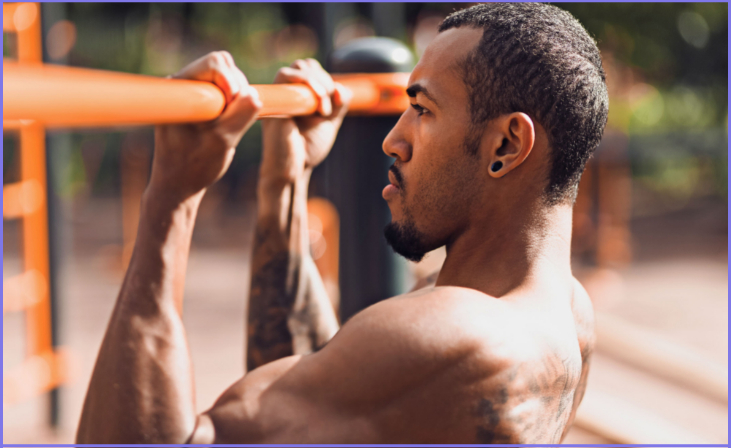
While primarily recognized as a back exercise, chin-ups significantly engage the biceps. This compound movement entails pulling your bodyweight up to a bar with an underhand grip. Chin-ups effectively target both the biceps and the back muscles, providing a functional and challenging exercise that contributes to overall upper body strength. Altering grip width during chin-ups allows for variations that can specifically emphasize the biceps.
Cable Curl
Cable curls offer sustained tension on the biceps throughout the entire range of motion. Utilizing a cable machine with various attachments, stand or kneel and perform curls with both arms simultaneously or unilaterally. The constant tension provided by the cable enhances the stimulation of muscle fibers, making it a valuable addition to any bicep training routine. Adjusting the cable height allows for versatile variations, effectively targeting different parts of the biceps and promoting a well-rounded development.
5 Things to Keep In Mind While Doing Bicep Exercises
Proper Form and Technique
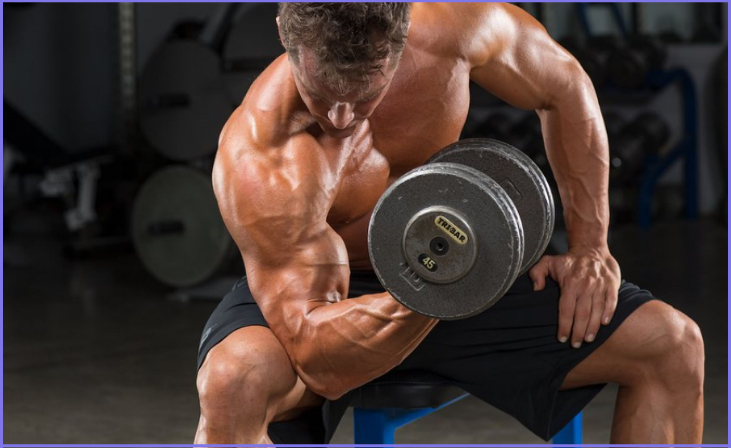
Maintaining proper form is crucial when performing bicep exercises. Not only does bad form make the exercise less effective, it also raises the risk of getting hurt. Ensure that you understand the proper technique for each exercise, including the positioning of your body, the range of motion, and the alignment of your joints. Focus on controlled movements and avoid using momentum to lift weights, as this can compromise the engagement of the biceps and lead to strain on other muscle groups.
Also Read: Benefits Of Yoga
Warm-Up Adequately
Before diving into your bicep workout, it’s essential to warm up your muscles to increase blood flow and flexibility. Performing light cardio, such as jumping jacks or a brisk walk, can help raise your heart rate and prepare your body for the upcoming exercises. Additionally, incorporate dynamic stretches targeting the biceps and surrounding muscles to enhance flexibility and reduce the risk of injuries during your bicep workout.
Mind-Muscle Connection
Focus on establishing a strong mind-muscle connection during bicep exercises. Concentrate on feeling the contraction of the biceps throughout each repetition, ensuring that the muscle is actively engaged. This mental connection can enhance the effectiveness of the workout by promoting better muscle recruitment and activation. Avoid simply going through the motions and, instead, concentrate on the sensations in your biceps during each exercise.
Progressive Overload
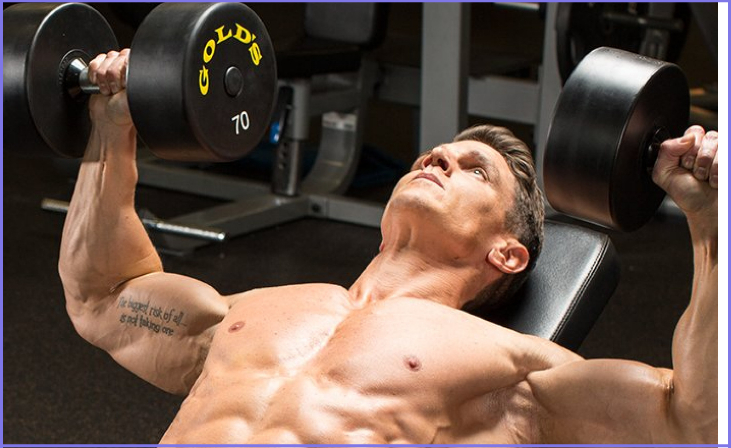
To stimulate muscle growth and strength, incorporate the principle of progressive overload into your bicep training. Gradually increase the resistance, whether through heavier weights, additional repetitions, or more challenging variations of exercises. This progressive approach challenges your muscles and promotes continuous adaptation, leading to improved bicep development over time. Keep a training log to track your progress and make informed adjustments to your workout routine.
Also Read: SARMs Stacks for Muscle Building
Recovery and Rest
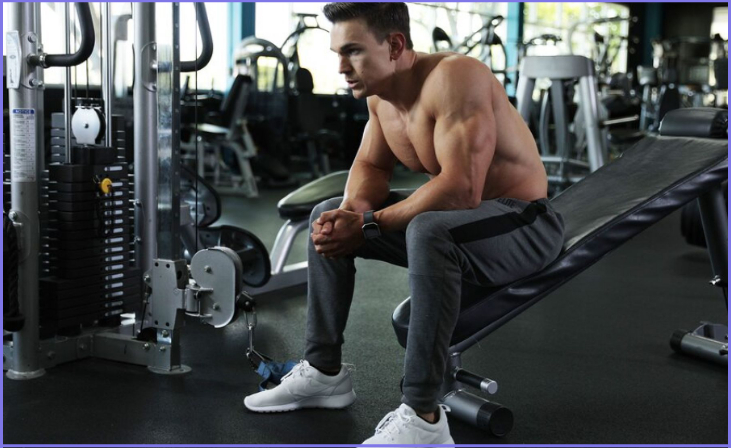
Adequate rest and recovery are integral components of any effective bicep training regimen. Overtraining can make you tired, raise your risk of getting hurt, and slow your progress. Allow your biceps sufficient time to recover between workouts, typically 48 hours or more. Incorporate rest days into your overall fitness routine to give your muscles the opportunity to repair and grow. Additionally, prioritize proper nutrition and hydration to support muscle recovery and overall well-being. Listen to your body, and if you experience persistent fatigue or soreness, consider adjusting your workout intensity or giving yourself additional rest.
Conclusion
Elevate your bicep game with the insights shared in this guide, transforming your workout routine into a sculpting powerhouse. By integrating the 7 best bicep exercises for men, you’re not just lifting; you’re strategically targeting key muscle groups. Embrace the variations, understand the science, and watch your biceps evolve. Whether you’re a seasoned lifter or just starting, these exercises provide the roadmap to achieving your desired arm definition. Take charge of your fitness journey, master the art of bicep training with these bicep curls, and let your strength speak volumes. Get ready to unveil the sculpted arms you’ve always envisioned!
FAQs
Absolutely! The selected exercises cater to all fitness levels, with variations to accommodate beginners while still challenging advanced lifters.
For optimal results, aim to perform these exercises 2-3 times per week, allowing adequate rest between sessions to promote muscle recovery and growth.




